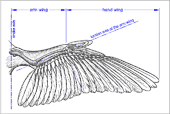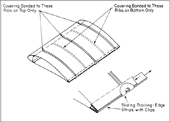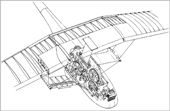SSS(Save,Sustain and Succeed)
Introduction:
 |
Idea!
When we make the wheels of the train to act as a turbine the kinetic energy of the wheels could be eventually be converted to electric energy. This electric energy can be stored in secondary cell batteries or be directly used in powering up fans, lights and cooling systems in the train.If this idea is extended, this power generated can also be used in powering up the engine, which will eventually make all trains electric and even the fans in our homes can be made as a self UPS system. This is applicable to automobiles including cars, autos and lorries designed as per Indian norms.
Theory:
The mad idea obeys the law of conservation of angular momentum and also the law of conservation of energy. According to the idea, every rotating machine can be made as an energy producer. As every rotatory object has kinetic energy acting on it, this energy can be suitably converted into reusable form of energy by making its rotatory parts act as a turbine which converts into electricity(Like a DC generator). When seeing it in a small scale, every rotatory household appliance like fans can act as a Self Installed UPS (SIUPS).
Why This?
For example, the Railways in India are a large network covering 64,215 km of track and 7083 stations across the country. It’s the fourth largest railway in the world. It carries 30 million passengers daily and the electricity that is needed to providethem comfort and luxury is about 2.5% of the country’s total electricity consumption. When we make the wheels of the train to act as a turbine the kinetic energy of the wheelscould be eventually be converted to electric energy. This electric energy can be stored in secondary cell batteries or be directly used in powering up fans, lights and cooling systems in the train. This idea can be extended to household appliances like fans to act as SIUPS. Consumption of electricity by Traction and Railways in last five decades (Giga Watt hour) - 1970 – 71 1,364 1975 – 76 1,855 1980 – 81 2,266 1985 – 86 3,182 1990 – 91 4,112 1995 – 96 6,2232000 – 01 8,213 2005 – 06 9,944 2006 – 07 10,800 2007 – 08 11,108 2008 – 09 11,425 2009 – 10 12,408 2010 – 11 14,003 According to an estimate, the railway sector’s demand for electricity will grow by seven percent annually and by 2020 it will have a projected energy demand of 37,500 kWh (million kilowatt hour)!!!..which is astonishing.
Implementation:
1)First this idea can be tested on trains which travel a distance of 500km and test the amount of electricity consumption that is reduced.
2)The generated energy through the wheels of the train will be used to power the lights and fans in the train.
3)Then after the success stories of the tested trains,the mad idea can be implemented in 100 long distance trains and it will considerably reduce the electricity consumption.
4)The whole of IRCTC network can be made to generate sustainable amount of electricity to power lights and fans in the trains
EFFECTS:
1)If implemented the electric power
consumption by the IRCTC can be considerably reduced from 15000 GWh to 5000 GWh.
2) Indian Railways pays over Rs 5,000 crores every year on account of traction energy charges which constitutes about 20 percent of total revenue budget of Railways.If the mad idea is executed IRCTC will only be paying around 40 %(approx.) 3)When the traditional fans in our houses are made to act as SIUPS as told before, when power cut or failure takes place, these fans can rotate using the energy stored while it was running.
4) Helps in conserving and sustaining energy in an efficient manner.
5)Reduces power consumption in houses which is the need of the hour!









